Abstract
1. The aerobic metabolism of cyclohexanecarboxylic acid by a bacterium isolated from garden soil (Acinetobacter anitratum) was investigated. 2. Evidence for the formation of cyclohex-1-ene-1-carboxylate, 2-hydroxycyclohexanecarboxylate and pimelate when either cell suspensions or cell-free extracts were incubated in the presence of cyclohexanecarboxylic acid is presented. 3. Crude cell-free extracts required ATP, CoA, FAD and Mg2+ as cofactors for the production of pimelate from cyclohexanecarboxylic acid, suggesting the existence of an activating reaction with formation of CoA esters, in this system.
Full text
PDF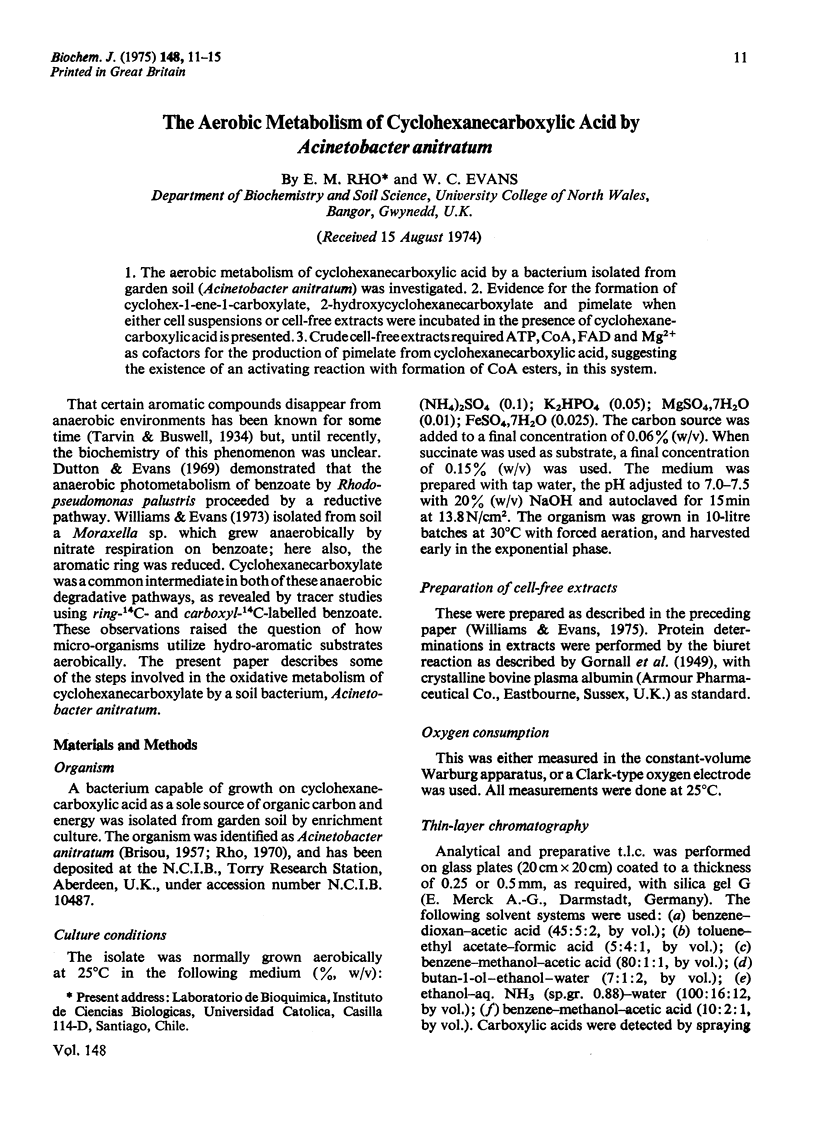
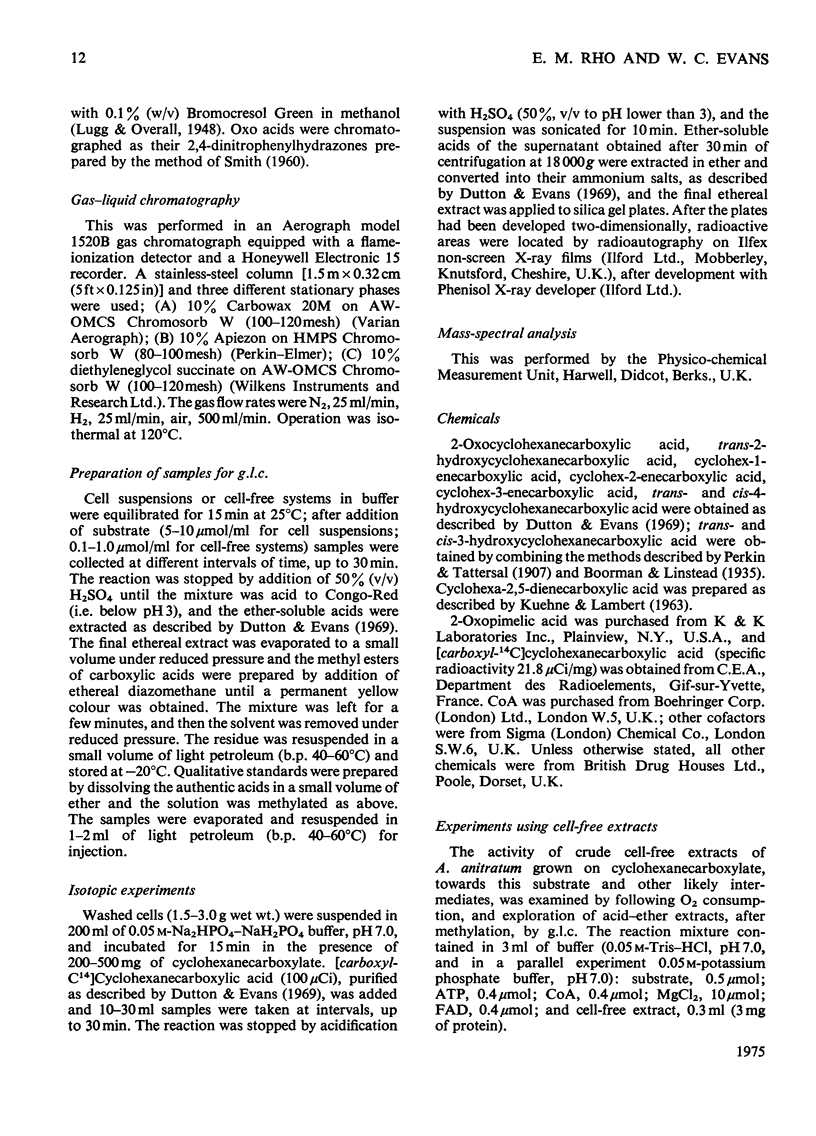
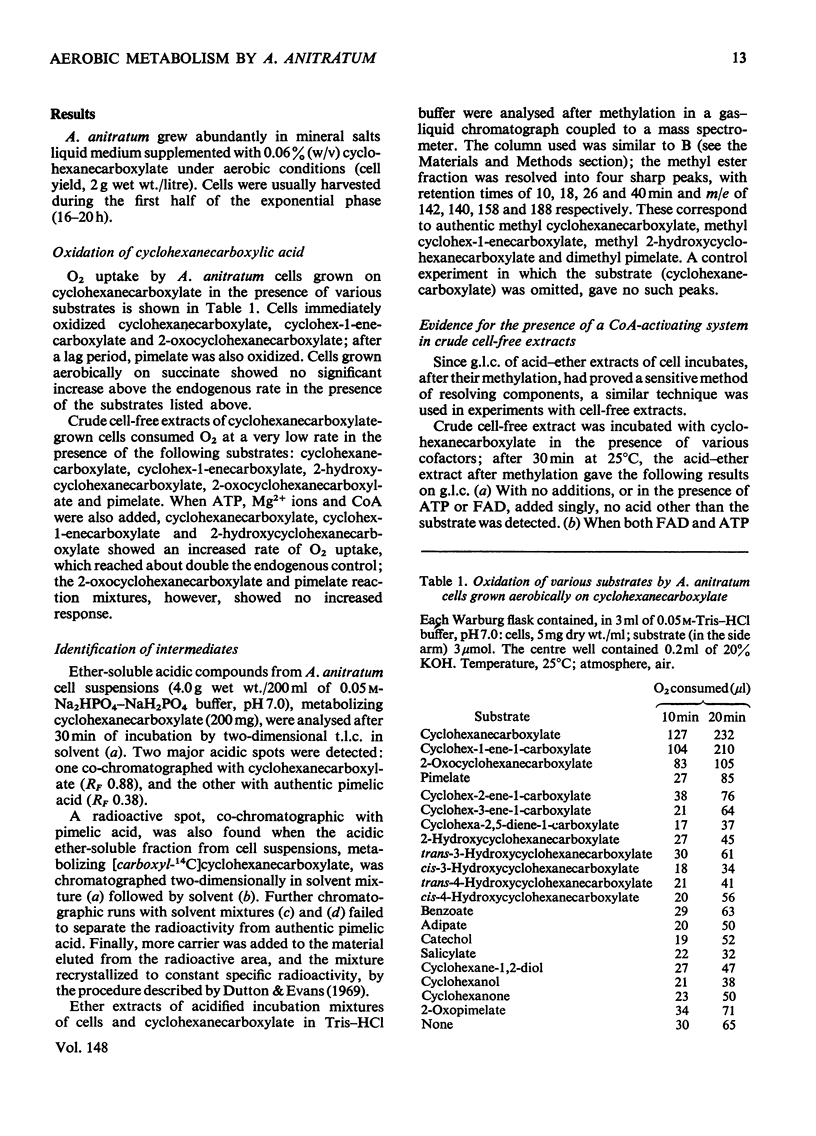
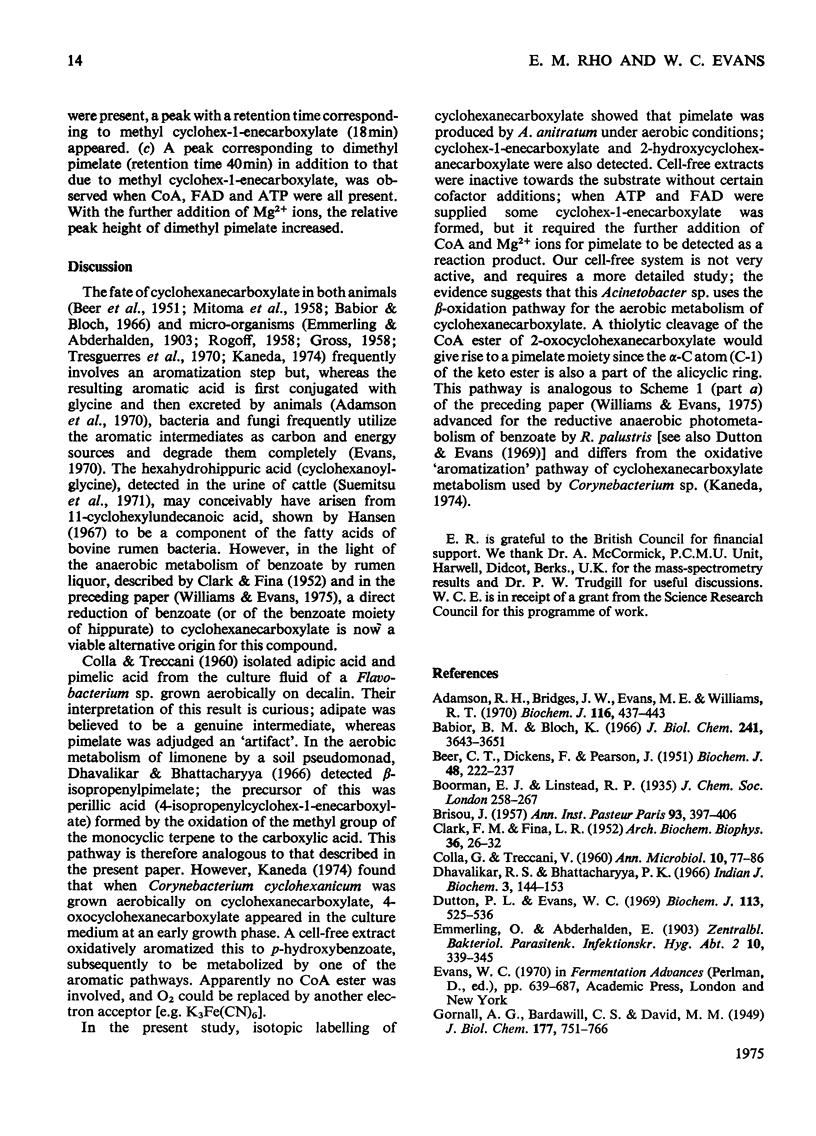
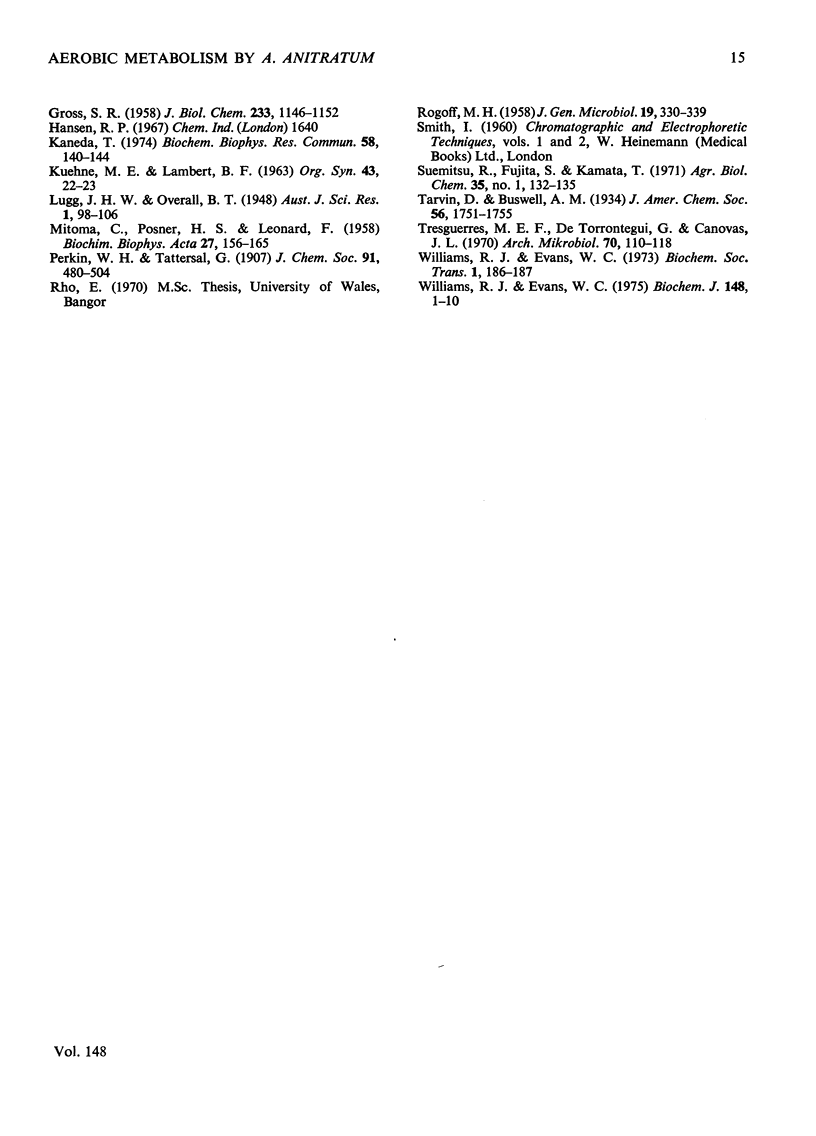
Selected References
These references are in PubMed. This may not be the complete list of references from this article.
- Adamson R. H., Bridges J. W., Evans M. E., Williams R. T. Species differences in the aromatization of quinic acid in vivo and the role of gut bacteria. Biochem J. 1970 Feb;116(3):437–443. doi: 10.1042/bj1160437. [DOI] [PMC free article] [PubMed] [Google Scholar]
- BEER C. T., DICKENS F., PEARSON J. The aromatization of hydrogenated derivatives of benzoic acid in animal tissues. Biochem J. 1951 Feb;48(2):222–237. doi: 10.1042/bj0480222. [DOI] [PMC free article] [PubMed] [Google Scholar]
- BRISOU J. Contribution a l'étude de la systématique des Pseudomonadaceae. Ann Inst Pasteur (Paris) 1957 Sep;93(3):397–404. [PubMed] [Google Scholar]
- Babior B. M., Bloch K. Aromatization of cyclohexanecarboxylic acid. J Biol Chem. 1966 Aug 25;241(16):3643–3651. [PubMed] [Google Scholar]
- CLARK F. M., FINA L. R. The anaerobic decomposition of benzoic acid during methane fermentation. Arch Biochem Biophys. 1952 Mar;36(1):26–32. doi: 10.1016/0003-9861(52)90374-3. [DOI] [PubMed] [Google Scholar]
- Dhavalikar R. S., Bhattacharyya P. K. Microbiological transformations of terpenes. 8. Fermentation of limonene by a soil pseudomonad. Indian J Biochem. 1966 Sep;3(3):144–157. [PubMed] [Google Scholar]
- Dutton P. L., Evans W. C. The metabolism of aromatic compounds by Rhodopseudomonas palustris. A new, reductive, method of aromatic ring metabolism. Biochem J. 1969 Jul;113(3):525–536. doi: 10.1042/bj1130525. [DOI] [PMC free article] [PubMed] [Google Scholar]
- GROSS S. R. The enzymatic conversion of 5-dehydroshikimic acid to protocatechuic acid. J Biol Chem. 1958 Nov;233(5):1146–1151. [PubMed] [Google Scholar]
- Kaneda T. Enzymatic aromatization of 4-ketocyclohexanecarboxylic acid to p-hydroxybenzoic acid. Biochem Biophys Res Commun. 1974 May 7;58(1):140–144. doi: 10.1016/0006-291x(74)90902-4. [DOI] [PubMed] [Google Scholar]
- MITOMA C., POSNER H. S., LEONARD F. Aromatization of hexahydrobenzoic acid by mamalian liver mitochondria. Biochim Biophys Acta. 1958 Jan;27(1):156–160. doi: 10.1016/0006-3002(58)90302-0. [DOI] [PubMed] [Google Scholar]
- Tresguerres M. E., De Torrontegui G., Cánovas J. L. The metabolism of quinate by Acinetobacter calco-aceticus. Arch Mikrobiol. 1970;70(2):110–118. doi: 10.1007/BF00412202. [DOI] [PubMed] [Google Scholar]
- Williams R. J., Evans W. C. The metabolism of benzoate by Moraxella species through anaerobic nitrate respiration. Evidence for a reductive pathway. Biochem J. 1975 Apr;148(1):1–10. doi: 10.1042/bj1480001a. [DOI] [PMC free article] [PubMed] [Google Scholar]


